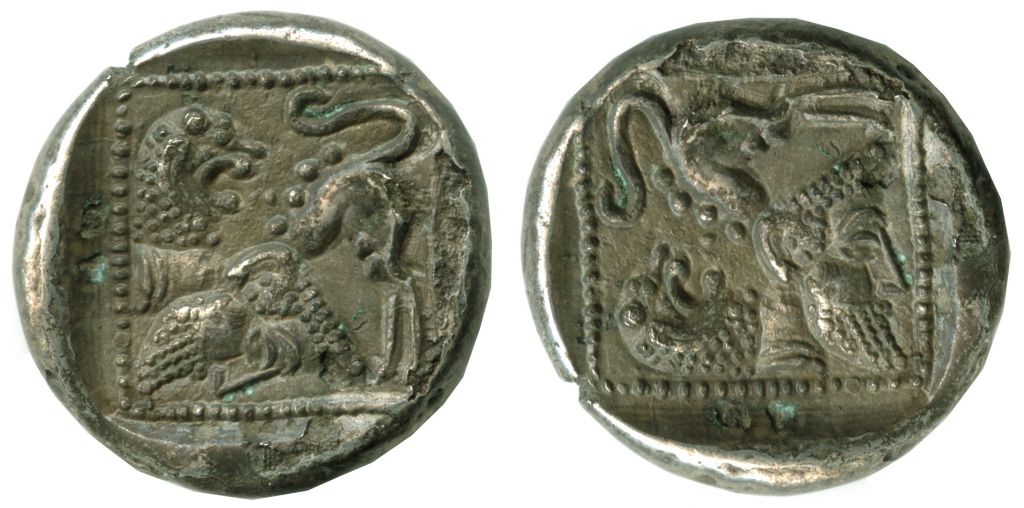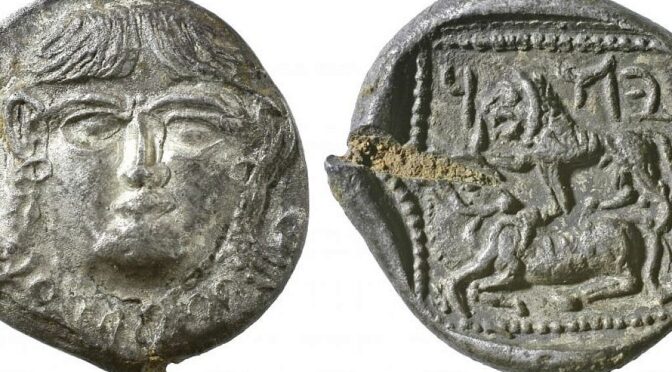The Israel Museum has obtained more than 1,200 ancient silver Persian coins, among the earliest known coinage from the region, including the world’s first Jewish coin.
The coins, which originated from the Persian Empire’s dominance of the region in the 5th and 4th centuries BCE, make up “the world’s greatest collection of Persian-period coins.”
According to the museum, the collection includes several previously unknown varieties. One of the most valuable artifacts is a silver drachm, an old coin based upon the Greek drachma that, in clearly legible Aramaic script, contains the word yehud, or Judea.

The currency collection dates from a century or more when Cyrus II (the Great) of the Achaemenid Persian Empire defeated and annexed the Neo-Babylonian Empire in 539 BCE. For the following two centuries, the Persians governed the Levant until Alexander of Macedon attacked and demolished their kingdom. The earliest known currency was produced from electrum – a silver-gold alloy — in Lydia, western Asia Minor, roughly a century before Persia invaded the Middle East.
The idea of minting coins with precious metals spreads throughout the empire. Shortly after, the satrapies of Syria and Jerusalem began minting their coins in Judea, Samaria, and Philistia. The 3.58 gram yehud coin was reportedly discovered in the hills southwest of Hebron, and New York antiquities enthusiast Jonathan Rosen bought it at an auction.
Rosen, described by The New York Times as “one of the world’s most prominent private collectors of Mesopotamian art,” agreed to gift his complete collection of Persian-era coins to the museum in March 2013. In November, the purchase was completed. The exhibition was named one of the top museum acquisitions of 2013 by Apollo, an international art magazine.
The silver drachm was likely made in Philistia, the coastal plain comprising the present cities of Ashdod, Ashkelon, and Gaza, for use in the province of Jerusalem, according to Gitler. However, a few other examples of coins bear the word Judea. “It was only afterward that Judea began to produce its coinage,” he explained.
Judea, Samaria, and Philistia were at the crossroads of civilizations and the furthest edges of the Persian Empire back then, as they are now, and local artisans would mimic styles from foreign currencies.
As a result, the coinage in the collection reflects a diverse range of creative influences from Persia, Greece, Anatolia, and Egypt. Many coins depict owls, a symbol connected with the goddess Athena, which appeared on ancient Greek drachmas. Other coins feature animals such as camels, horses, cows, eagles, lions, deities, heroes, and legendary beasts.
The iconography of the Judean drachm reflects the local synthesis of creative styles. A gorgoneion, a Greek icon of a gorgon’s head that serves as a talisman against evil, is emblazoned on its obverse. Still, its hair is fashioned like the Egyptian goddess Hathor. A lion astride a cow with the Aramaic letters yod, heh, and dalet is depicted on the other side. The exact meaning of the iconography on the coin is unknown.
Gitler dated the coin to the early 4th century BCE based on the stylization of the gorgon head, which was demonic and bestial in previous iterations before becoming more anthropomorphic through the years, and the style of the Aramaic script.

According to Gitler, the die-engravers of Persian Palestine who designed the coins expressed a creative tendency not seen elsewhere in the empire, resulting in a “local flavor” of currency. The coins from Tyre and Sidon, just along the coast, have smaller sizes and various styles.
He pointed out that a Philistian drachm from the late 5th century BCE in the collection used clever “optical tricks” in its design.
The lion on the reverse of the coin becomes the bearded man’s helmet, and its paws become the man’s hair when turned 90 degrees counterclockwise. Such illusions were prevalent, according to Gitler, who pointed out that a Samarian coin from the same period depicted the head of a bearded man whose face is made up of two features in profile. Hidden owls can also be found roosting in the patterns of other animals.
“The coins show us various motifs that are not comparable” in the Persian Empire, according to Gitler. “It demonstrates that people who designed these coins weren’t simply doing it because they had to, but they loved it.”
The Israel Museum’s Archaeology Wing has several coins from the collection on display, including the lion optical illusion coin pictured above.
Of course, we’ll start incorporating more of the collection in the future,” he said, expressing interest in organizing an exhibition of a selection of coins in the collection, which he described as “even more amazing” than the White Gold exhibit in 2012, which featured the world’s first electrum currency.






















